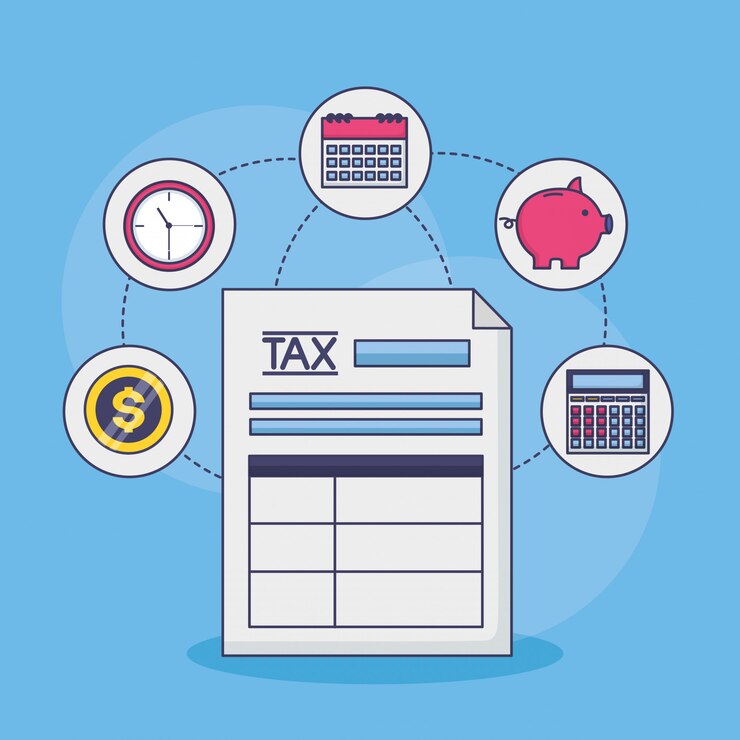Major Benefits of GST to Consumers
- 18 Aug 24
- 11 mins

Major Benefits of GST to Consumers
Key Takeaways
- GST simplifies the tax framework by merging multiple central and state taxes into a single tax, reducing the compliance burden and operational costs for businesses.
- The introduction of the composition scheme under GST helps small businesses by allowing them to pay a fixed percentage of their turnover, simplifying tax compliance.
- GST enhances tax revenues by broadening the tax base and improving compliance through its transparent and centralized digital system.
- The streamlined indirect tax structure under GST eliminates the cascading effect of taxes, leading to more competitive pricing and increased market consumption.
- GST boosts the e-commerce sector by standardizing tax rates across states and implementing e-way bills for easier interstate movement of goods.
What is GST?

GST, or Goods and Services Tax, is a comprehensive, indirect tax levied on the manufacture, sale, and consumption of goods and services at a national level. Implemented to streamline the complex and overlapping tax structure, GST replaces various taxes previously levied by both state and central governments in India.
Its introduction aimed to unify the country’s vast market into a single tax regime, reducing tax-on-tax (also known as cascading effects) and enhancing overall economic efficiency. This system simplifies taxation, makes it more transparent, and aims to increase compliance among businesses by consolidating multiple taxations into a single, more manageable system.
Objectives of GST
The main objectives of GST are multifaceted, designed to enhance the efficiency of the tax system in India:
- To Subsume a Majority of the Indirect Taxes in India GST consolidates numerous indirect taxes such as Value Added Tax (VAT), Service Tax, Excise Duty, and others that were previously levied separately by state and central governments into one unified tax system.
- To Eliminate the Cascading Effect of Taxes GST eliminates the cascading effect, which is a tax on tax previously prevalent under the old tax regime. By allowing input tax credits, GST ensures that each level of the supply chain is taxed only on the value addition, not the total sales price.
- To Curb Tax Evasion By implementing a transparent digital system for the recording of transactions and the centralized registration of taxpayers, GST makes it harder for tax evasion practices to persist, leading to increased accountability and compliance.
- To Increase the Taxpayer Base GST simplifies the tax structure, making it easier for more businesses to comply and thus encouraging more entities to register and legally disclose their transactions, thereby widening the taxpayer base.
- Online Procedures for Ease of Doing Business All procedures under GST, from registration to filing returns, are managed online through the GST portal. This digital approach simplifies processes, making it more convenient for businesses to comply with tax regulations and interact with tax authorities.
- An Improved Logistics and Distribution System The removal of inter-state barriers and check posts under GST has streamlined the movement of goods across states, significantly reducing transit times and logistics costs. This, in turn, has made the supply chain more efficient and less costly.
- To Promote Competitive Pricing and Increase Consumption By reducing the overall tax burden on manufacturers and service providers, GST encourages lower consumer prices. Competitive pricing can lead to increased demand and consumption, boosting economic activity and growth.
Tax Structure Before GST
Before the introduction of the Goods and Services Tax (GST) in India, the tax structure was complex and fragmented with multiple indirect taxes levied by both the state and central governments. This old tax regime included various taxes, each with its own rules and regulations, which often led to a cumbersome compliance process and overlapping taxes. Here's a breakdown of the major components:

- Central Taxes:
- Excise Duty: Levied by the Central Government on the manufacture of goods, this tax was applicable to most products produced in India.
- Service Tax: Imposed on the gross or aggregate value of services provided.
- Central Sales Tax (CST): Charged on the sale of goods between states, administered by the Central Government but collected by the states where the goods were sold.
- State Taxes:
- Value Added Tax (VAT): A state-level tax on the sale of goods within a state, which varied from state to state, leading to different VAT rates across the country.
- Luxury Tax: Imposed on luxury goods and services, which again varied widely between states.
- Entry Taxes: Charged by state governments on the entry of goods into a state from another state, often leading to double taxation under the CST.
- Entertainment Tax: Levied by states on every transaction related to entertainment such as cinema, shows, and exhibitions.
- Additional Taxes:
- Octroi and Local Body Taxes: Charged by municipal or local bodies on the entry of goods into areas under their jurisdiction.
This multi-tiered tax structure created several issues:
- Cascading Effect of Taxes: Taxes were imposed on an already taxed value, leading to a "tax on tax" scenario. This not only made goods and services more expensive but also complicated the tax calculation process.
- Lack of Transparency: With so many taxes and varied rates, it was difficult for businesses and consumers to understand the exact tax implications of transactions.
- Complexity and High Compliance Costs: Managing compliance with different tax laws for different states was administratively challenging and costly for businesses, especially those operating across state lines.
- Inter-state Trade Barriers: Varied state-level taxes and CST created economic barriers between states, hampering the efficiency of inter-state trade.
GST Benefits for Consumers

The implementation of the Goods and Services Tax (GST) in India brought several significant advantages to the economy, streamlining the tax system and promoting a more competitive market environment. Here are some key benefits:
Streamlined Tax Structure: GST has simplified the tax framework by merging a multitude of central and state taxes into a single tax system. This unification has made tax administration more straightforward and reduced the complexities involved in tax compliance, benefiting businesses and consumers alike.
💡If you want to pay your GST with Credit Card, then download Pice Business Payment App. Pice is the one stop app for all paying all your business expenses.
Elimination of Multiple Taxation Points: By introducing GST, India has moved away from the cascading tax system where goods and services were taxed multiple times at different stages. GST is levied only on the value added at each stage, eliminating the problem of 'tax on tax' that was prevalent earlier.
Input Tax Credit (ITC) Benefits: GST allows businesses to claim credit for the tax paid on their purchases, known as Input Tax Credit (ITC). This system reduces the cost of goods and services as businesses can set off their GST liabilities on inputs against those on outputs, leading to a direct benefit to consumers through lower prices.
Increased Market Competitiveness: With GST, the barriers to inter-state commerce are significantly reduced, leading to a more seamless flow of goods and services across state boundaries. This reduction in tax-driven price distortions in different states fosters a more competitive market, benefiting both businesses and consumers.
Boost to E-Commerce: GST has standardized tax rates across the country, removing the complexities associated with different state taxes that e-commerce companies had to navigate. This has facilitated easier compliance and expansion opportunities for e-commerce businesses, enhancing the overall consumer experience with more consistent pricing and service.
Transparency and Compliance: GST has brought more businesses into the formal sector by making tax compliance mandatory for trading across states. The transparent nature of the tax, with everything being processed digitally through the GSTN (GST Network), reduces the likelihood of tax evasion and increases compliance.
Reduction in Black Market Activities: By enforcing a structured and monitored tax framework where input tax credits can only be claimed if the corresponding output tax has been paid, GST cuts down the incentives for black market activities. This leads to more business transactions being recorded officially, thereby reducing the size of the informal economy.
Disadvantages of GST
While the Goods and Services Tax (GST) has been largely beneficial for streamlining taxation in India, it does present certain disadvantages for consumers. Here are some key drawbacks:
- Increased Prices for Some Services and Products: While GST has reduced the tax burden on many goods, the tax rate on services and some specific products has increased. This includes items and services that were previously taxed at lower rates under the old VAT or service tax regimes, such as restaurant services, telecommunications, and insurance, which can now be more expensive for consumers.
- Complexity in Understanding Tax Slabs: GST features multiple tax slabs (0%, 5%, 12%, 18%, and 28%), and understanding which products fall into which tax bracket can be confusing for the average consumer. This complexity can lead to uncertainty about the final price of goods and services.
- Initial Inflation Spike: The initial implementation of GST led to a temporary spike in inflation. As businesses adjusted to the new tax regime, the immediate transfer of increased tax rates to consumers resulted in higher prices for various goods and services, affecting consumer spending.
- Impact on Budgeting: For households, fluctuating prices due to varying tax rates on different categories of goods and services can make budgeting more challenging. The impact is more pronounced on middle and lower-income families, who may find it harder to manage their spending on essential goods and services.
- Technical Issues with GST Filing System: Consumers can indirectly be affected by the technical glitches in the GSTN portal. Issues such as delays in tax credit confirmations or problems in filing returns can disrupt business operations, potentially leading to increased prices or a shortage of goods in the market.
 By
By 















